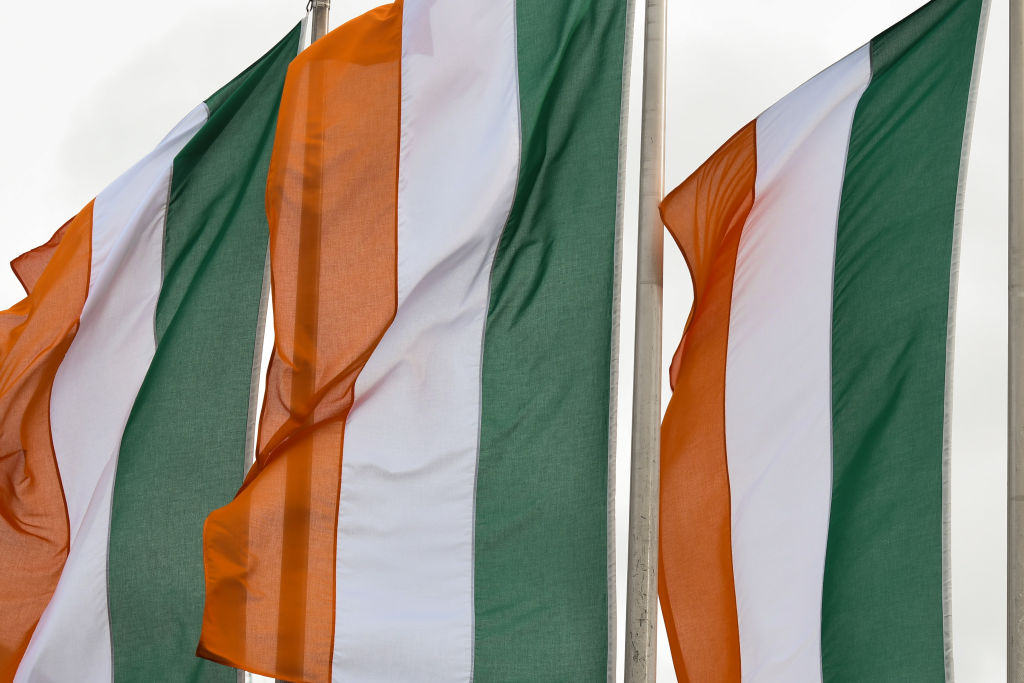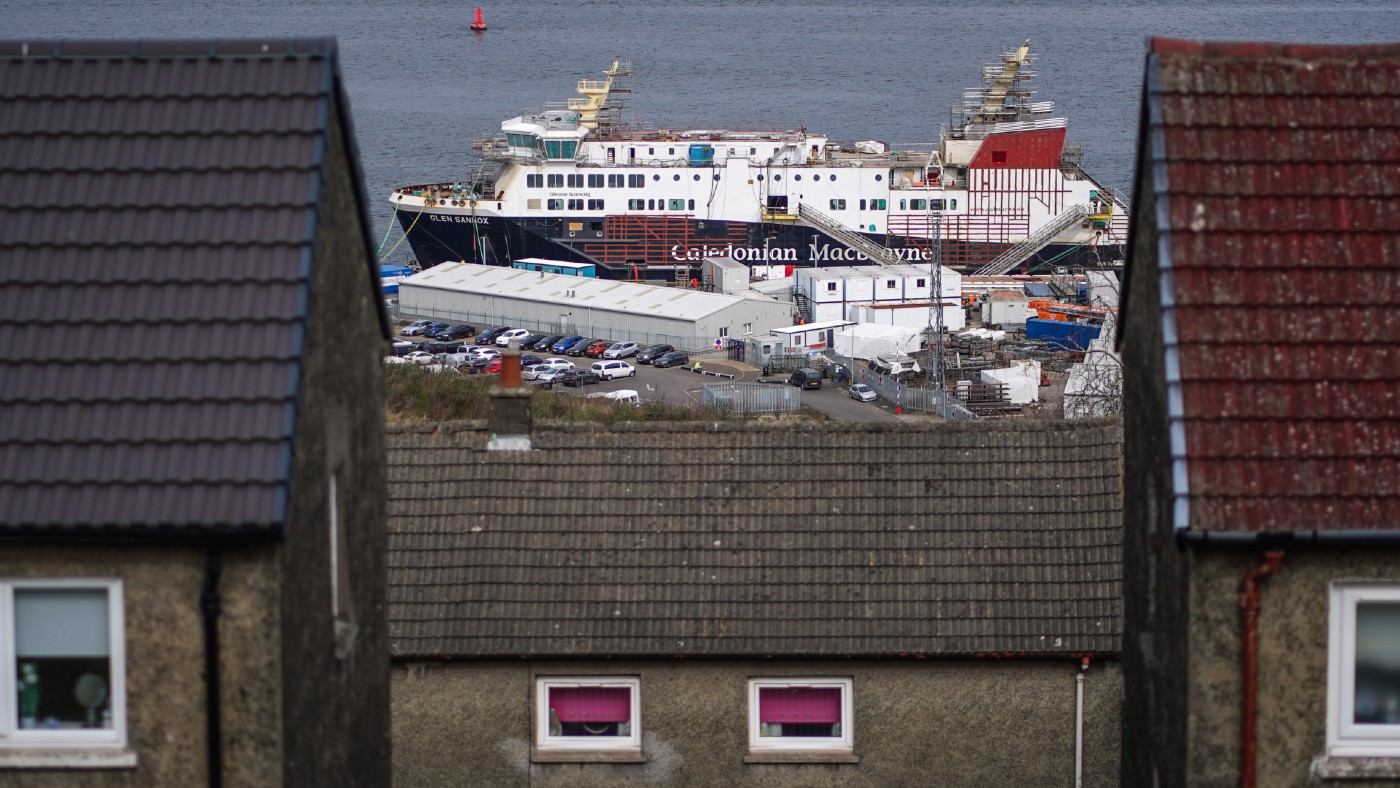What Scotland can learn from Irish independence
Economists predict Scottish transition would fail to curb increasing interest rates and inequality

Eoin McLaughlin and Seán Kenny of University College Cork on the economic lessons to be drawn from Ireland’s 1922 split from the UK
The UK local elections in May saw gains for nationalists in Scotland and Northern Ireland, raising the prospect of increased debates over the future make-up of the country. In Scotland, First Minister Nicola Sturgeon is hoping to hold a second independence referendum in 2023.
The economic context may have deteriorated since 2014 due to Brexit and Covid, but two key issues remain pertinent: Scotland’s choice of currency and whether its public finances would be sustainable. On both subjects, there are some useful lessons that can be drawn from the last secession from the UK, namely that of Ireland in 1922.
The Week
Escape your echo chamber. Get the facts behind the news, plus analysis from multiple perspectives.

Sign up for The Week's Free Newsletters
From our morning news briefing to a weekly Good News Newsletter, get the best of The Week delivered directly to your inbox.
From our morning news briefing to a weekly Good News Newsletter, get the best of The Week delivered directly to your inbox.
Sturgeon has indicated that an independent Scotland would be open to “sharing” the UK pound for a while to help bring stability. Ireland took the same approach until 1928, when it launched its own currency, the punt, pegged one-for-one to the pound sterling, which made sense because Ireland was heavily integrated into the UK economy.
The peg was managed by a currency board and was comparatively stable for over 50 years. The price for Ireland was the loss of monetary policy, choosing to follow UK interest rates, set by the Bank of England, instead. This is in line with the so-called “policy trilemma” in economics that says that a country cannot maintain a fixed exchange rate, control over interest rates and free capital flows at the same time, but must choose two out of the three alternatives.
Had interest rates not been harmonised, foreign investors might have pulled their money out of Ireland for fear that the currency peg wouldn’t hold and they would lose out as a result. Such a withdrawal would only increase the chances of a currency collapse, potentially making necessary imports unaffordable (this is known as a balance of payments crisis). Indeed, this happened in 1955 when Ireland did not raise interest rates in line with the Bank of England, resulting in a sharp recession and increases in emigration.
Over the years, UK monetary policy was also a constraint on the Irish government’s budget. Although in theory it was free to decide how to tax and spend, the need to maintain the sterling peg prevented various Irish governments from deviating too far from the UK’s approach to borrowing.
A free daily email with the biggest news stories of the day – and the best features from TheWeek.com
An independent Scotland is likely to face similar constraints. In 2018, the Sustainable Growth Commission (SGC), an economic body set up by the Scottish government to come up with credible financial plans for independence, stipulated that a pegged Scottish currency would require significant fiscal discipline. It noted that the “6% to 7% fiscal deficit is not sustainable”. In 2022-23, Scotland’s deficit is projected to exceed 10%.
The punt abandoned its sterling peg in 1979. By that time, the Irish volume of trade with continental Europe had grown significantly, following its accession to the pre-EU European Economic Community in 1973. Sterling was in the midst of a major appreciation in value on the back of the discovery of North Sea oil, rising 55% between 1977 and 1981.
However, Irish fiscal policy now lacked its traditional disciplinary anchor. Ireland’s debt grew significantly after 1979 and began to look precarious until the government reined in its budget and introduced pro-growth policies, including devaluing the punt, in the second half of the 1980s.
Fiscal liabilities
Among the most challenging issues for any dissolving nation state is apportioning government debts. In 2014, in language remarkably similar to the Anglo-Irish Treaty a century before, the UK Treasury issued a communiqué stating that, “[an] independent Scotland would become responsible for a fair and proportionate share of the UK’s current liabilities”.
With Ireland, that wasn’t what transpired. It ended up being granted the largest debt relief in modern history, in return for accepting the status quo border with Northern Ireland. Scotland doesn’t have a comparable bargaining chip, though the British nuclear submarine base at Faslane near Glasgow is very contentious. Perhaps the Scottish government would be allowed to write off debts in exchange for abandoning its anti-nuclear stance and allowing the UK unfettered access to Faslane.
Having said that, the Irish civil war (1922-23) and the Northern Ireland troubles (1969-97) demonstrate that the people may still decide that sacrificing something of great political importance in exchange for a debt write-off may ultimately be a step too far.
Fiscal constraints
Scotland currently runs a slightly different income tax policy to the rest of the UK. It charges an extra percentage point of tax to those in its two higher income bands: 41% on earnings between £43,663 and £150,000 and 46% on earnings above £150,000. It also has slightly wider bands than the rest of the UK so that people pay these rates on more of their income.
Instead of extracting greater revenue from wealthier citizens, Ireland was compelled after independence to lower the income taxes of these people who had supported the British union to discourage them from taking their money out of the country. The government then had to raise revenues in other ways, such as via budget cuts and increased duties on alcohol and tobacco. This increased inequality by inflicting most of the pain on the (predominantly nationalist) working classes.
This was quite a shift for Ireland. In contrast to 19th century nationalist rhetoric, Ireland had received comparatively generous social spending in the final decades of the union. A significant share of the Irish economy had also benefited from free trade with Britain. Again, the same could be said of Scotland.
A final contentious issue is pension contributions. While the SGC said back in 2018 that they would be affordable, the nation has an elderly population. Would the state pension be compatible with a balanced Scottish budget? Ireland learned that tackling the pension issue can produce a disproportionately negative political response, when the electorate voted against the ruling Cumann na nGaedheal party in 1932 for “tampering with the old age pensioners”.
There is no doubt that Scotland, like Ireland in the early 20th century, could succeed as an independent state. Indeed, key strengths such as oil and gas, renewables, financial services and higher education suggest it would start off in a wealthier position.
But managing the transition won’t be straightforward. Ireland’s experience shows that the need for fiscal discipline may be politically costly and adjustment may not be shared equally. Those who are promised the most through independence may be the ones that find themselves having to do the bulk of the heavy lifting.
Eoin McLaughlin, senior lecturer in economics, University College Cork, and Seán Kenny, post-doctoral researcher in economics, University College Cork.
This article is republished from The Conversation under a Creative Commons licence. Read the original article.
-
 How will China’s $1 trillion trade surplus change the world economy?
How will China’s $1 trillion trade surplus change the world economy?Today’s Big Question Europe may impose its own tariffs
-
 ‘Autarky and nostalgia aren’t cure-alls’
‘Autarky and nostalgia aren’t cure-alls’Instant Opinion Opinion, comment and editorials of the day
-
 Japan’s Princess Aiko is a national star. Her fans want even more.
Japan’s Princess Aiko is a national star. Her fans want even more.IN THE SPOTLIGHT Fresh off her first solo state visit to Laos, Princess Aiko has become the face of a Japanese royal family facing 21st-century obsolescence
-
 Why the ‘energy price cap’ is confusing – and how it could be better communicated
Why the ‘energy price cap’ is confusing – and how it could be better communicatedfeature Government assumptions over public’s energy illiteracy doing more harm than good
-
 Tory leadership election: why tax cuts are an economic gamble
Tory leadership election: why tax cuts are an economic gamblefeature The candidates regard tax cuts as the road to redemption, only differing on the details of how much and how soon
-
 What currency would an independent Scotland use?
What currency would an independent Scotland use?In Depth An informal adoption of sterling is likely to be Scotland’s only route to keeping the pound
-
 The road to a second Scottish independence referendum
The road to a second Scottish independence referendumfeature Nicola Sturgeon launched her latest bid for Scottish independence last week
-
 Why are wages not keeping up with inflation?
Why are wages not keeping up with inflation?feature Real wages sank after the global financial crisis and only returned to pre-2008 levels very recently
-
 How do bank holidays affect the economy?
How do bank holidays affect the economy?feature Millions are about to enjoy a four-day weekend thanks to the Queen’s Platinum Jubilee
-
 Trading currencies: what the experts think
Trading currencies: what the experts thinkfeature Euro-parity, a nasty cocktail and the pound’s ‘doom loop’
-
 Scotland’s ongoing ferry fiasco: what you need to know
Scotland’s ongoing ferry fiasco: what you need to knowIn Depth Delays in the delivery of two new CalMac passenger ferries have caused a major political scandal